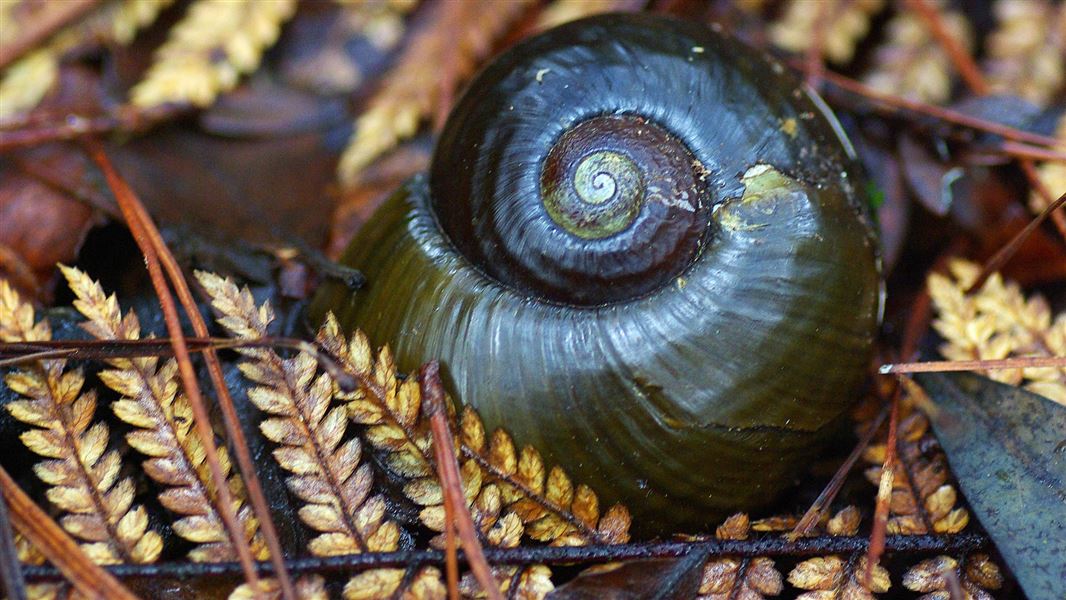
Introduction
Once widespread through Northland, the kauri snail now has a limited distribution in parts of Northland and on a few offshore islands.Kauri snails/pupurangi (Paryphanta spp.) belong to the group of northern giant land snails, which contains some of New Zealand's largest snails.
Facts
There are two species of kauri snail:
- Paryphanta busbyi – up to 79 mm shell diameter, distribution from Kaitaia south (Northland only)
- Paryphanta watti – up to 62 mm shell diameter, distribution: northern Northland (Te Paki)
These giants were once widespread in Northland before human settlement. Many of them are now endangered or threatened, and inhabit a more restricted area of Northland and the islands offshore.
Interesting ecology
- Giant snails may live to 20 years or more.
- Mating appears to be triggered by climatic conditions, such as rainfall, and can last for 10 hours or more.
- Snail hatchlings spend an unknown period living in trees and shrubs up to 6 metres above the ground.
- The kauri snail is carnivorous and cannibalistic. Its diet consists of earthworms, insects, insect larvae, and snails.
- Kauri snails are also highly mobile, and have been known to move 10 metres in 2 weeks.
Habitat
Kauri snails inhabit moist areas of forest and native scrub. They live in areas of high soil fertility and abundant earthworms.
Threats
The causes of decline for kauri snails include:
- Habitat destruction – caused by humans
- Habitat modification – caused by domestic and feral grazers, including horses and cows
- Predation – by introduced animals, including rats and pigs
- Collection of live animals for their shells may once have had an effect on population size.
1080 poison helps native snails
Possums cause massive problems for New Zealand's native species. The periodic use of the biodegradable poison 1080 to kill possums has reversed the decline in snail populations.
DOC's work
Past conservation efforts
Management of priority kauri snail colonies has been carried out since the early 1980s. Most of this management has consisted of poisoning rodents, enhancement planting, fencing colonies, and stock control. These actions have successfully allowed some species of kauri snails to recover from near extinction to colonies of some hundreds.
Translocations of kauri snails have led to the establishment of populations at Awhita Peninsula, Kaimai Ranges, Waitakere Ranges, and Warkworth. Captive breeding has so far resulted in limited success.
You can help
These are some of the things you can do to help if you have giant land snails on your property:
- Fence off areas of bush where the snails are present. This will stop stock from trampling and crushing them.
- Control rodents, as they prey on juvenile snails. Snail populations greatly benefit from rodent control.
- Control pigs. They are also a predator, and eat adult snails as well as damaging snail habitat through rooting.
DOC welcomes any comments or suggestions you may have about the conservation of giant snails. These can be directed to the recovery group via any DOC office.